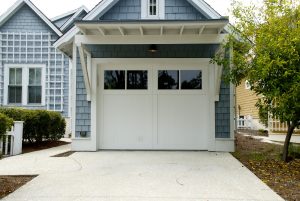 For anyone considering replacing their garage door, how it will affect their energy bill should be one of the primary considerations when choosing the best door. An energy-efficient door can substantially lower your bills every month, helping you not only save money but increasing the resale value of your home. And it’s great for the environment since you’ll be using less energy through greater efficiency. Here are a few things to keep in mind when choosing a garage door.
For anyone considering replacing their garage door, how it will affect their energy bill should be one of the primary considerations when choosing the best door. An energy-efficient door can substantially lower your bills every month, helping you not only save money but increasing the resale value of your home. And it’s great for the environment since you’ll be using less energy through greater efficiency. Here are a few things to keep in mind when choosing a garage door.
The Value Efficiency of Wood End Blocks
In the composition of your garage door, the end blocks help to keep the insulation material where it belongs. This is also where the hinges to your door are attached. The majority of garage door manufacturers use steel end caps for their end blocks. It’s very common, but the problem is that the metal allows heat to move in and out of the garage, which isn’t as efficient.
Wood end blocks are far superior for efficiency because wood doesn’t transfer the heat as quickly as metal.
You’ll be able to keep your garage cooler on hot days. Since most garages are attached to the house, your air conditioner won’t have to work as hard to keep the house cool, saving on energy.
Check Your Weatherstripping
This doesn’t just apply to new garage doors. Replacing old weatherstripping is actually a handy and easy DIY garage door repair that can substantially improve its efficiency. You can do it yourself for about $50 in materials and a few hours. This will not only help your garage be more insulated, saving money on cooling costs in Sacramento’s hot summers, but will keep out the rain and weather.
Why the Door Section Joints Are Important
How are the sheets of the exterior and interior metal on your garage door attached? Many are attached with metal staples, which are not very efficient for controlling temperature. Instead, choose a new door that has a triple-contact PVC weather seal. This prevents the metal on the exterior and the interior to connect, limiting loss heat energy for greater efficiency. Any new door you install should definitely have this type of section joint to ensure the best performance efficiency.
Consider the R-Value
R-Value is the measurement of an insulated door’s resistance to heat flow. It is based on the type of materials used in the construction of the door. The higher the R-Value, the more efficient the insulation is. You should look for an R-value of at least 12 to 18 for the best efficiency.
